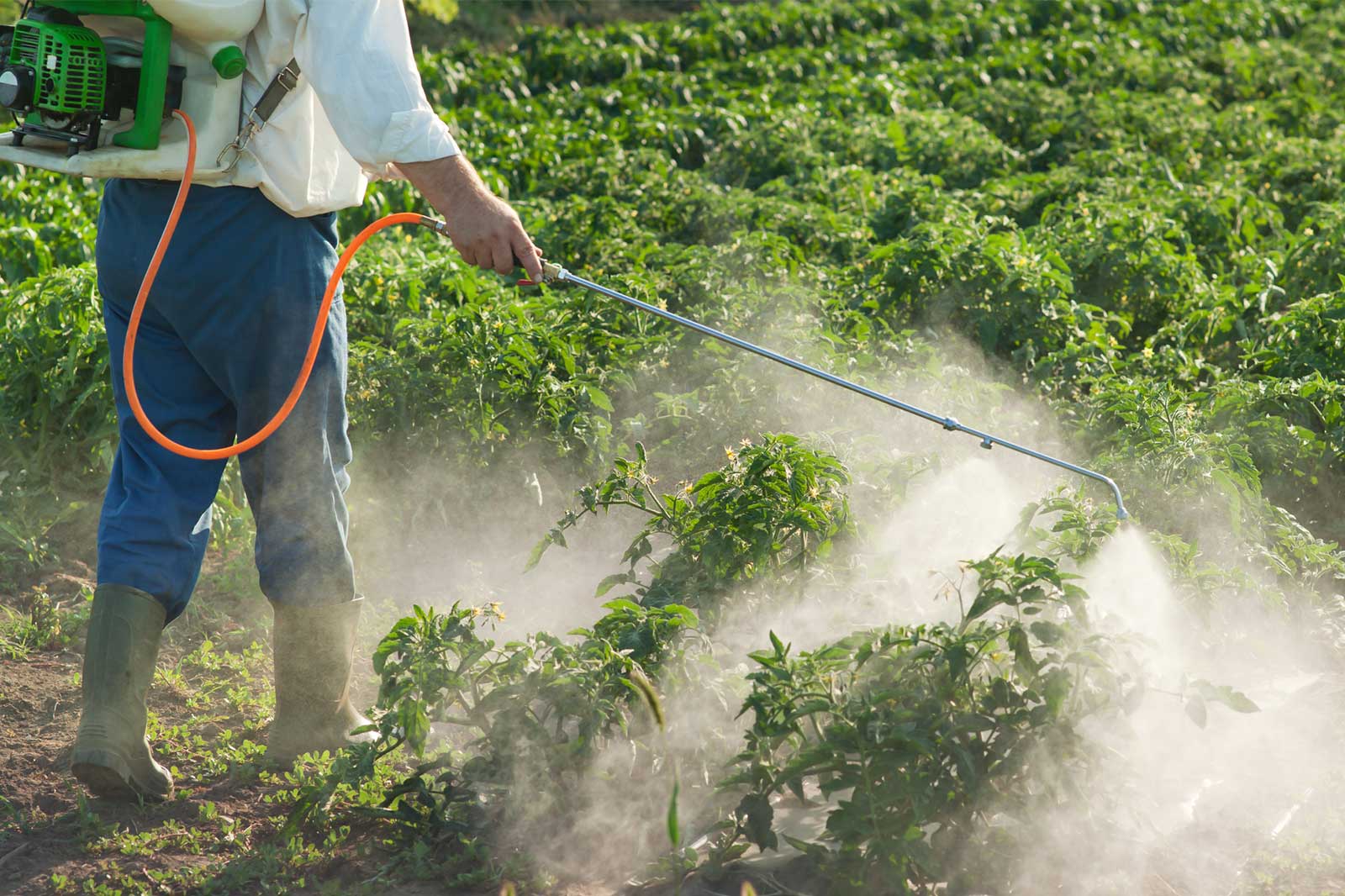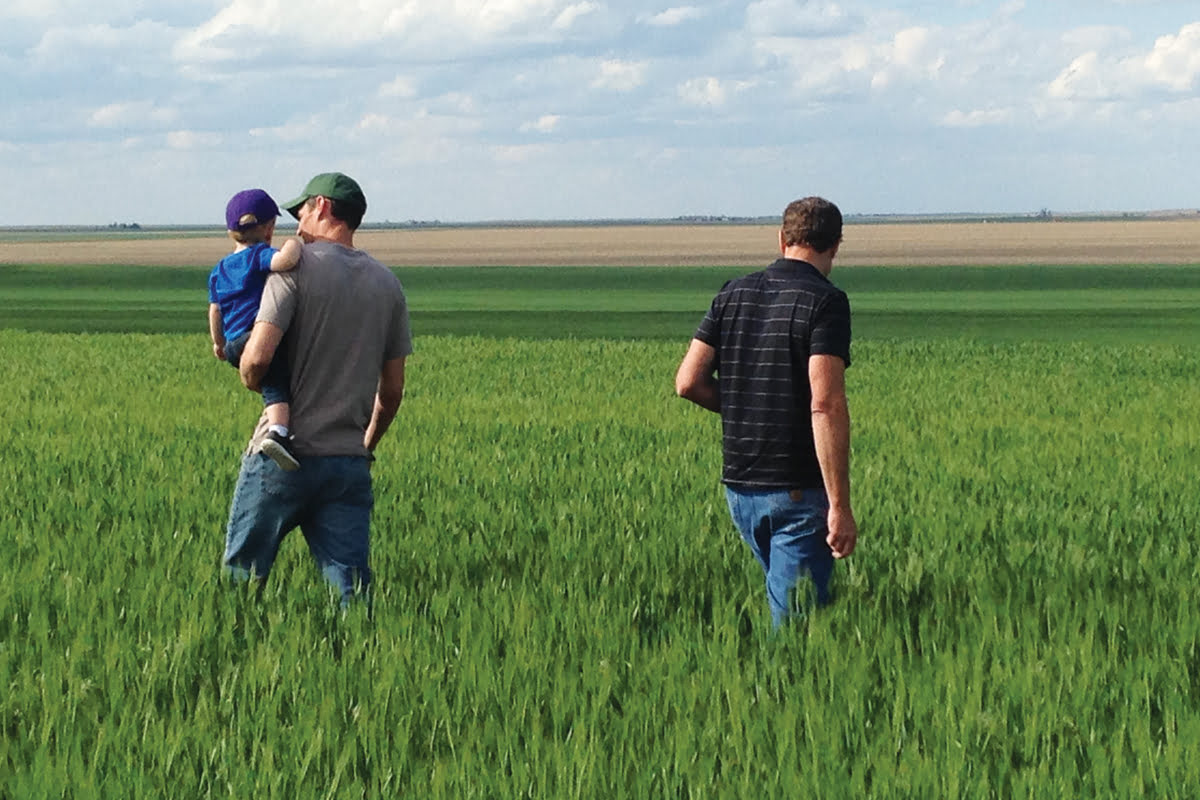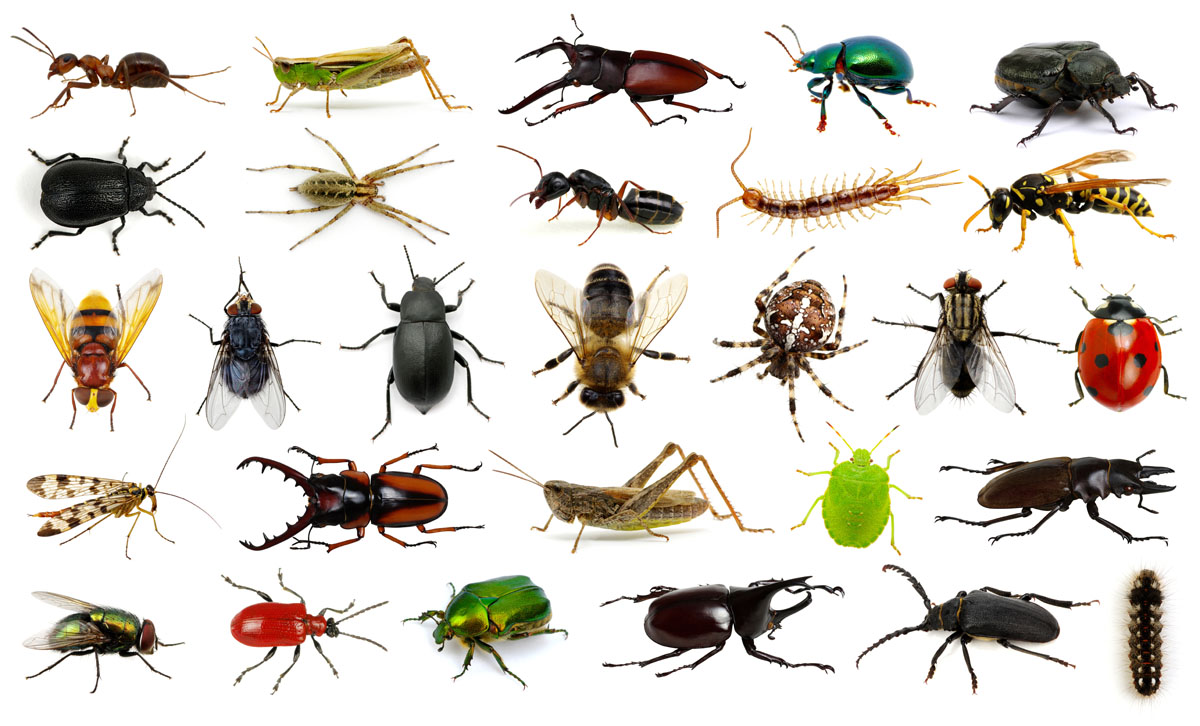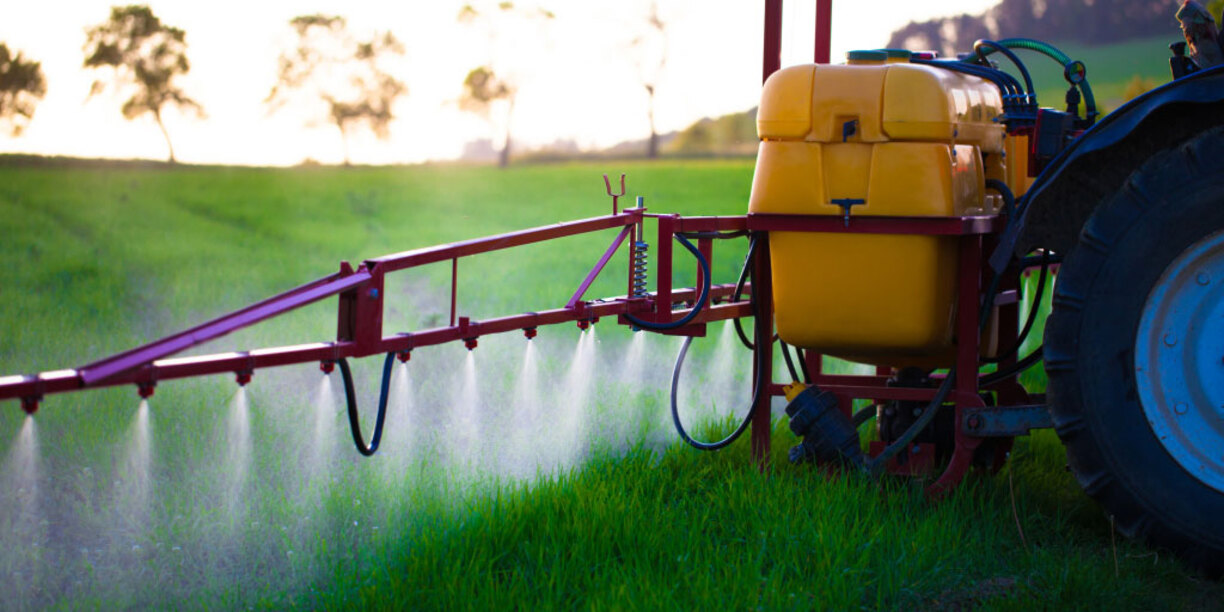Home>Gardening News and Trends>Latest News>Why Do Some Species Become Resistant To Pesticides
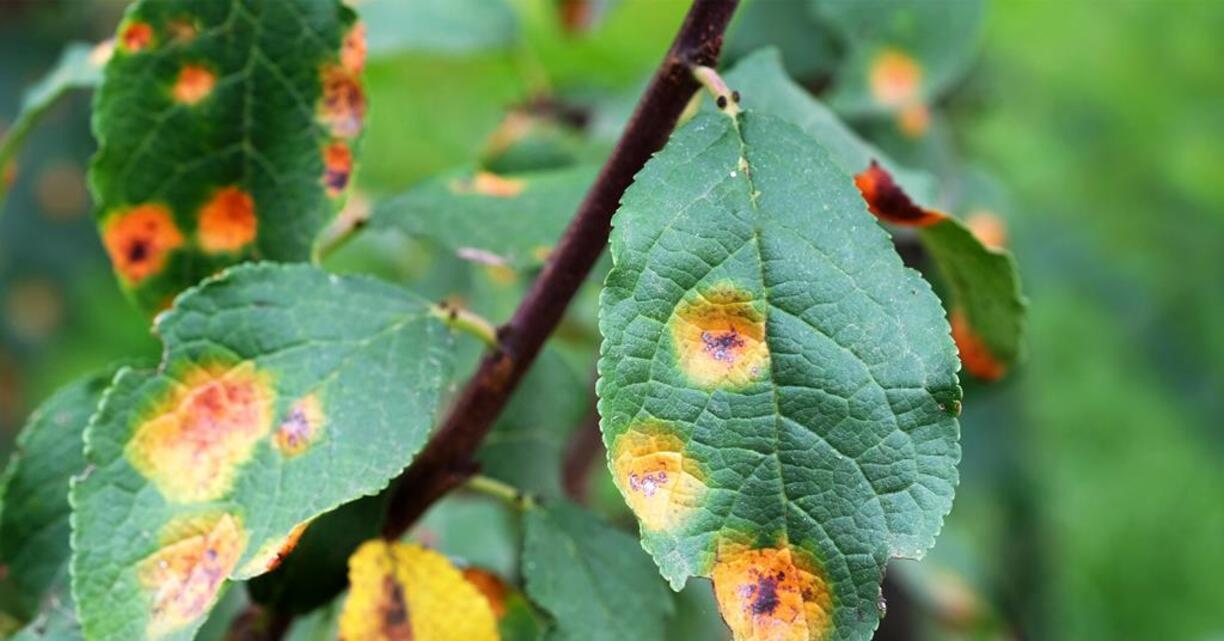

Latest News
Why Do Some Species Become Resistant To Pesticides
Modified: January 22, 2024
Stay updated with the Latest News on why some species develop pesticide resistance and how it impacts agriculture. Find out the reasons behind this alarming phenomenon.
(Many of the links in this article redirect to a specific reviewed product. Your purchase of these products through affiliate links helps to generate commission for Chicagolandgardening.com, at no extra cost. Learn more)
Table of Contents
- Introduction
- Definition of Pesticide Resistance
- Factors Contributing to Pesticide Resistance
- Genetic Adaptations
- Target Site Alterations
- Enhanced Detoxification Mechanisms
- Reduced Uptake or Increased Excretion of Pesticides
- Methods to Monitor Pesticide Resistance
- Impacts of Pesticide Resistance
- Strategies to Manage Pesticide Resistance
- Conclusion
Introduction
The use of pesticides has revolutionized modern agriculture by controlling pests and increasing crop yields. However, over time, some species of pests have evolved to become resistant to the effects of these chemical substances. Pesticide resistance is a growing concern for farmers, agricultural scientists, and environmentalists alike. Understanding the factors contributing to pesticide resistance and implementing strategies to manage it is crucial for maintaining sustainable agricultural practices.
Pesticide resistance refers to the ability of certain organisms, such as insects, weeds, or fungi, to survive exposure to pesticides that would normally control or eliminate them. This resistance can develop through genetic changes within the pest population, allowing them to tolerate or even thrive in the presence of pesticides.
There are several factors that contribute to the development of pesticide resistance. One of the key factors is the selective pressure exerted by the repeated use of the same or similar pesticides. When a pesticide is used repeatedly over a long period of time, the pests that are susceptible to it are killed, leaving behind a population of individuals with natural genetic variations that may confer some level of resistance. These resistant individuals then reproduce and pass on their resistant traits to the next generation, leading to an increase in pesticide resistance within the population.
Genetic adaptations play a significant role in the development of resistance. Some pests may already possess genetic variations that make them naturally less susceptible to certain pesticides. These variations can provide a foundation for further resistance to develop when exposed to selective pressure from pesticide use.
In addition to genetic adaptations, pests can develop resistance through target site alterations. Pesticides often work by targeting specific biochemical pathways or receptor sites within the pest’s body. When these target sites undergo structural changes that prevent the pesticide from binding effectively, the pest becomes resistant. This alteration can occur through mutations in the genes responsible for building the target site.
Enhanced detoxification mechanisms can also contribute to pesticide resistance. Pests have the ability to produce enzymes that break down or detoxify the pesticide before it can cause harm. These enzymes can neutralize the toxic effects of the pesticide or convert it into a less harmful form, thereby reducing its effectiveness.
Furthermore, pests can develop resistance by reducing the uptake or increasing the excretion of pesticides. They may change the structure of their tissues or cuticles to limit pesticide penetration, or develop mechanisms to rapidly excrete the pesticides from their bodies.
Definition of Pesticide Resistance
Pesticide resistance is a phenomenon that occurs when pests, such as insects, weeds, or fungi, are no longer affected by the chemicals intended to control or eliminate them. It is the ability of these organisms to withstand the toxic effects of pesticides and continue to survive and reproduce. Pesticide resistance poses a significant challenge in agriculture, as it diminishes the effectiveness of pest management strategies and can lead to increased crop damage and economic losses.
When pests are exposed to pesticides, most individuals are typically killed or their populations are significantly reduced. However, a small proportion of pests may possess genetic variations that provide them with a level of inherent resistance. These resistant individuals survive the exposure and pass on their resistance traits to their offspring, leading to an increase in the overall level of pesticide resistance in the population over time.
The development of pesticide resistance is a complex process influenced by various factors. One of the primary factors is the selective pressure exerted by the repeated use of pesticides. By using the same pesticide or similar chemicals repeatedly, pests that are susceptible to the substance are eliminated while those with inherent resistance or a capacity to develop resistance are left to survive and reproduce. This allows resistant traits to become more prevalent in the population, leading to reduced effectiveness of treatment with the same pesticide.
Pesticide resistance can manifest in different forms. It can be classified as either quantitative or qualitative resistance. Quantitative resistance refers to a gradual decrease in sensitivity to the pesticide, where the pest requires higher doses of the chemical for control. On the other hand, qualitative resistance involves a complete loss of susceptibility to the pesticide, rendering it ineffective even at high concentrations.
It is important to note that pesticide resistance is not limited to a single pest species. Various pests, such as insects, weeds, and fungi, have demonstrated the ability to develop resistance to different types of pesticides across different agricultural systems. This highlights the versatility and adaptability of pests in response to selective pressures.
Managing pesticide resistance requires a multidimensional approach. It involves implementing integrated pest management (IPM) strategies that incorporate a combination of cultural, biological, and chemical control methods, as well as the judicious use of pesticides. By diversifying pest control methods, rotating pesticides with different modes of action, and adopting practices that reduce the reliance on chemical treatments, farmers can mitigate the development and spread of pesticide resistance.
Factors Contributing to Pesticide Resistance
Pesticide resistance is influenced by several factors that contribute to the development and spread of resistance within pest populations. Understanding these factors is crucial for implementing effective pest management strategies and mitigating the impact of resistant pests on agriculture.
1. Selective pressure: The repeated use of the same or similar pesticides creates selective pressure on pest populations. Pests that are susceptible to the pesticide are eliminated, while those with inherent resistance or the ability to develop resistance survive and reproduce. This leads to an increase in the prevalence of resistant individuals within the population over time.
2. Genetic variation: Genetic variations within pest populations play a significant role in the development of pesticide resistance. Some pests may already possess genetic traits that make them naturally less susceptible to certain pesticides. These traits can provide a foundation for further resistance to develop when exposed to selective pressure from pesticide use. Genetic variation allows pests to adapt and evolve more quickly in response to environmental changes.
3. Reproductive capacity: Pests with a high reproductive capacity, such as insects, can rapidly produce a large number of offspring. This increases the chances of genetic mutations occurring that confer resistance to pesticides. Additionally, pests with shorter generation times can adapt more quickly to changing environmental conditions and the selective pressure imposed by pesticide use.
4. Mode of action: Pesticides have specific modes of action that target certain biochemical processes or receptor sites in pests. If a pest population is repeatedly exposed to pesticides with the same mode of action, individuals with natural variations that make them less susceptible to that specific mode of action have a higher chance of surviving. This can lead to the development of resistance within the population.
5. Pesticide persistence: Some pesticides have longer persistence in the environment, which means they remain active for extended periods of time. Pests that are exposed to these persistent pesticides over a longer duration have greater opportunities to develop resistance. Additionally, residual effects of pesticides can provide selective pressure on subsequent pest generations.
6. Inadequate management practices: Inadequate use of pesticides, such as under-dosing or overuse, can contribute to resistance development. Under-dosing exposes pests to sub-lethal doses, which select for resistant individuals. Overuse results in continuous exposure to the same pesticide, increasing the likelihood of resistance development.
7. Lack of crop rotation and diversity: Planting the same crop repeatedly in a field provides a consistent environment for pests, allowing them to adapt and develop resistance. Crop rotation and diversification disrupt the pest’s life cycle and reduce its ability to build up resistance. This practice is an essential component of integrated pest management (IPM) strategies.
By understanding these contributing factors, farmers and agricultural scientists can optimize pest management practices and develop strategies that minimize the development and spread of pesticide resistance. Implementing integrated pest management approaches, employing a diverse range of control methods, and promoting sustainable agricultural practices are essential steps towards effective pest control and long-term sustainability in agriculture.
Genetic Adaptations
Genetic adaptations play a significant role in the development of pesticide resistance within pest populations. These adaptations can occur naturally or be acquired through the process of natural selection. Understanding the genetic mechanisms behind pesticide resistance is crucial for devising effective pest management strategies.
Some pests may already possess genetic variations that make them less susceptible to certain pesticides. These variations can be present within the pest population even before pesticide exposure. When exposed to selective pressure from pesticide use, individuals with these genetic adaptations have a higher chance of survival and reproduction. Consequently, their resistant traits are passed on to the next generation.
There are several types of genetic adaptations that can contribute to pesticide resistance:
1. Single gene mutations: Genetic mutations in a single gene can have a significant impact on pesticide resistance. A mutation may alter the structure or function of a specific target site within the pest’s body, making it less susceptible to the pesticide’s actions. These mutations can occur spontaneously or be present in the population at low frequencies. When exposed to the pesticide, individuals carrying the mutation have a survival advantage and can pass on the resistant trait to their offspring.
2. Gene amplification: In some cases, pests can develop resistance by increasing the number of copies of genes responsible for pesticide detoxification. This amplification allows for higher production of enzymes that break down or neutralize the pesticide, reducing its effectiveness. This adaptation provides a rapid response to selective pressure and can lead to higher levels of resistance within the population.
3. Gene expression: Pests can also adapt by upregulating the expression of genes involved in detoxification mechanisms. This increase in gene expression results in higher production of detoxification enzymes, enabling the pest to metabolize and eliminate the pesticide more efficiently. Elevated gene expression levels can be hereditary and passed on to subsequent generations, leading to increased resistance over time.
4. Horizontal gene transfer: In rare cases, genetic material containing pesticide resistance traits can be transferred between different species through horizontal gene transfer. This transfer can occur through mechanisms such as bacterial gene transfer or viral transduction. Horizontal gene transfer plays a relatively minor role in most cases of pesticide resistance, but it can contribute to the spread of resistance within pest populations.
Genetic adaptations provide pests with the ability to survive and reproduce in the presence of pesticides, posing a significant challenge for effective pest control. The rapid evolution of resistance through genetic adaptations underscores the importance of integrated pest management (IPM) strategies that incorporate diverse control methods, including cultural, biological, and chemical approaches. By understanding and monitoring these genetic adaptations, scientists and farmers can adapt their pest management strategies and develop new pesticides or treatment protocols that target the specific mechanisms behind resistance.
Target Site Alterations
One of the ways in which pests develop resistance to pesticides is through target site alterations. Pesticides are designed to interact with specific biochemical processes or receptor sites within the pest’s body. When pests undergo genetic changes that alter the structure or function of these target sites, they become less susceptible to the effects of the pesticide. Target site alterations are a common mechanism of resistance in many pests and can significantly reduce the effectiveness of pesticide treatments.
Pests can develop target site alterations through genetic mutations that affect the genes responsible for building and maintaining the target sites. These mutations can result in changes to the structure of the target site, preventing the pesticide from binding or interacting with it effectively. As a result, the pesticide is unable to disrupt the pest’s physiological processes or cause harm.
The specific types of target site alterations can vary depending on the pest and the pesticide class. Here are a few examples:
1. Target site insensitivity: Some pests may develop mutations that render the target site insensitive to the pesticide’s mode of action. These mutations can alter the structure of the target site in a way that prevents the pesticide from binding or interacting with it. As a result, even at high concentrations, the pesticide is unable to exert its desired effect on the pest.
2. Reduced target site affinity: Target site alterations can also lead to reduced affinity between the pesticide and the target site. This means that the pesticide has a lower binding affinity or weaker interaction with the target site. As a result, higher concentrations of the pesticide are required to achieve the desired level of control, reducing its effectiveness in managing the pest population.
3. Altered enzyme activity: In some cases, pests can develop target site alterations that affect the activity of enzymes involved in pesticide breakdown or detoxification. These alterations can lead to changes in enzyme structure or function, allowing the pest to metabolize or detoxify the pesticide more efficiently. Consequently, the pesticide is rendered ineffective against the resistant individuals.
4. Enhanced efflux proteins: Some pests have the ability to develop target site alterations that increase the activity of efflux proteins. These proteins pump the pesticide out of the pest’s cells before it can accumulate to toxic levels. By increasing the expression or activity of efflux proteins, the pest can decrease the amount of pesticide that reaches the target site, reducing its impact on the pest’s physiology.
Target site alterations provide pests with a genetic advantage, allowing them to tolerate or resist the effects of pesticides. Monitoring for target site alterations in pest populations is crucial for understanding and managing pesticide resistance. It helps researchers and farmers identify the specific mechanisms of resistance and develop strategies that target alternative pathways or develop new pesticides that can overcome these alterations. Additionally, integrated pest management approaches that incorporate multiple control methods can help minimize the selection pressure on target sites and slow down the development of resistance.
Enhanced Detoxification Mechanisms
Enhanced detoxification mechanisms are another key factor contributing to pesticide resistance in pests. These mechanisms involve the pests’ ability to produce enzymes that break down or neutralize the pesticide before it can cause harm. By increasing the activity or expression of these detoxification enzymes, pests can render pesticides ineffective and survive exposure.
Detoxification enzymes, such as cytochrome P450s, esterases, and glutathione S-transferases, play a crucial role in breaking down or modifying the chemical structure of pesticides. These enzymes are normally involved in metabolic processes within the pest, but when exposed to selective pressure from pesticides, their activity can be enhanced to cope with the toxic compounds.
There are several types of mechanisms by which pests develop enhanced detoxification mechanisms:
1. Gene amplification: Pests can develop resistance by increasing the number of copies of genes responsible for the production of detoxification enzymes. This amplification results in higher enzyme production, allowing the pest to metabolize and detoxify the pesticide more efficiently. Increased gene copy numbers provide a selective advantage, as pests with more copies of the detoxification gene have a higher capacity to breakdown pesticides.
2. Enhanced gene expression: Pests can upregulate the expression of genes encoding detoxification enzymes, leading to increased production of these enzymes. This enhanced gene expression can be hereditary, allowing subsequent generations to have a higher baseline level of detoxification enzyme activity. By rapidly producing and deploying detoxification enzymes, pests can neutralize or eliminate the pesticide before it can cause harm.
3. Structural alterations: In some cases, pests can develop structural alterations in detoxification enzymes that enhance their ability to metabolize pesticides efficiently. These alterations can include modifications to the enzyme’s active site, allowing it to better bind and break down the pesticide molecules. Structural alterations enable the pest to detoxify the pesticide more effectively, reducing its toxic impact.
Enhanced detoxification mechanisms provide pests with a means to counteract the toxic effects of pesticides and survive pesticide exposures. The increased metabolism and breakdown of pesticides by detoxification enzymes render the pesticides less effective in controlling the pest population.
Monitoring and understanding the mechanisms of enhanced detoxification in pest populations are crucial for effective pest management. By identifying the specific detoxification enzymes involved in resistance, researchers can develop diagnostic tools to detect resistance and track its spread. Additionally, the development of alternative control methods that bypass or inhibit these detoxification mechanisms can help overcome pesticide resistance.
Integrated pest management (IPM) approaches that incorporate a combination of cultural, biological, and chemical control methods can also help mitigate the development of enhanced detoxification mechanisms. By reducing reliance on pesticides and employing strategies that disrupt the pest’s life cycle, farmers can minimize selective pressure on detoxification enzymes and slow down the development of resistance.
Reduced Uptake or Increased Excretion of Pesticides
Reduced uptake or increased excretion of pesticides is a mechanism employed by pests to develop resistance and survive exposure to chemical treatments. Some pests have the ability to adapt their physiology and behaviors to limit the uptake of pesticides into their bodies or increase the rate at which they eliminate the chemicals. These adaptations can significantly reduce the efficacy of pesticide treatments and pose challenges for pest management strategies.
Reduced Uptake: Pests can develop adaptations that decrease the uptake of pesticides through their cuticles or other tissues. The cuticle, which acts as a protective barrier, can be modified to become thicker or more impermeable, making it harder for pesticides to penetrate the pest’s body. Pests may also reduce the number or activity of transport proteins or channels responsible for pesticide uptake, limiting the amount of pesticide that enters their cells. These adaptations effectively reduce the amount of toxin that reaches the target site, making it less effective in controlling the pests.
Increased Excretion: Pests can also increase their rate of excretion to eliminate pesticides more quickly from their bodies. They may develop mechanisms such as specialized transport proteins or enzymatic reactions that facilitate the rapid removal of the toxic compounds. The increased excretion allows pests to prevent the buildup of pesticide concentrations that could be toxic to their physiological processes. By expelling the pesticide before it can cause harm, pests can survive and reproduce even in the presence of chemical treatments.
Pests can employ these adaptations individually or in combination to reduce the impact of pesticide exposure. The ability to limit pesticide uptake or increase pesticide excretion allows pests to maintain their survival and reproductive capabilities, contributing to the development of pesticide resistance.
Monitoring the reduced uptake or increased excretion mechanisms in pest populations is important for assessing resistance levels and developing effective pest management strategies. Understanding the specific adaptations employed by pests can inform the selection and application of alternative control methods that bypass these mechanisms. Additionally, implementing integrated pest management (IPM) practices that incorporate a combination of cultural, biological, and chemical control methods can help minimize the selective pressure on reduced uptake and increased excretion adaptations, slowing down the development of resistance.
Methods to Monitor Pesticide Resistance
Monitoring pesticide resistance is essential for assessing the effectiveness of pest management strategies and identifying the development and spread of resistance within pest populations. By implementing appropriate monitoring methods, farmers and agricultural scientists can track resistance levels, detect emerging resistance, and make informed decisions to optimize control measures. Several methods are commonly used to monitor pesticide resistance:
1. Bioassays: Bioassays involve testing the susceptibility of pests to a range of pesticide concentrations. In laboratory or field settings, pests are exposed to different doses of the pesticide, and their survival or response is observed. Comparison of responses to known susceptible populations helps determine the level of resistance within a given population. Bioassays can provide valuable information on the efficacy of pesticides and the presence of resistance.
2. Molecular diagnostics: Molecular techniques, such as polymerase chain reaction (PCR) and DNA sequencing, can be used to detect specific genetic markers associated with pesticide resistance. By analyzing the DNA of pests, researchers can identify the presence of specific resistance genes or genetic mutations linked to resistance. This approach offers a rapid and accurate method for assessing resistance levels and tracking its spread.
3. Field performance monitoring: Field performance monitoring involves assessing the effectiveness of agricultural treatments in real-world settings. By comparing the performance of pesticides in different fields or regions, researchers can detect variations in pest control efficacy, which may indicate the presence of resistance. Monitoring treatment outcomes over time, such as crop damage or yield loss, can provide valuable insights into the development and impact of resistance.
4. Synergism and enzyme activity assays: Synergism and enzyme activity assays assess the role of detoxification enzymes in pesticide resistance. These assays involve exposing pests to a known inhibitor of detoxification enzymes before exposing them to the pesticide. If the inhibitor restores susceptibility to the pesticide, it indicates that enhanced detoxification mechanisms are contributing to resistance. Measuring the activity of detoxification enzymes provides additional evidence of resistance mechanisms.
5. Field surveys and surveys of resistance frequency: Field surveys involve collecting data on pesticide use, pest population densities, and treatment outcomes. By monitoring these parameters over time, researchers can identify trends and changes that may indicate the presence of resistance. Additionally, surveys of resistance frequency involve collecting pest samples from different locations and testing their susceptibility to pesticides. These surveys provide valuable information about the prevalence and geographic distribution of resistance.
Comprehensive monitoring programs often involve a combination of these methods to obtain a holistic understanding of pesticide resistance. Regular monitoring helps inform decision-making, allowing farmers and researchers to adapt their pest management strategies and implement effective control measures. It is important for stakeholders to collaborate and share data to collectively address the challenges posed by pesticide resistance.
Impacts of Pesticide Resistance
Pesticide resistance has significant implications for agriculture, the environment, and human health. The emergence and spread of resistant pests can have several negative impacts that affect the effectiveness of pest management strategies and overall sustainability.
1. Reduced pest control efficacy: The primary impact of pesticide resistance is a decrease in the effectiveness of pest control measures. Pesticides that were once effective at controlling pest populations become less efficient as resistant individuals survive and reproduce. This reduction in control efficacy can result in increased crop damage, yield losses, and economic implications for farmers.
2. Increased pesticide use: In response to pesticide resistance, farmers often resort to increased pesticide use to achieve the desired level of pest control. This can lead to a higher dependence on chemical treatments, which carries associated costs, environmental risks, and potential health hazards for farmers and other workers involved in pesticide application.
3. Environmental impacts: Pesticide resistance can have negative environmental consequences. Increased pesticide use, as a result of resistance, can lead to the contamination of soil, water bodies, and non-target organisms. Pesticides can disrupt ecological balance, harm beneficial insects, pollinators, and natural enemies of pests, and contribute to the loss of biodiversity.
4. Health risks: Pesticide resistance can pose health risks to those in direct contact with pesticides, including farmers and workers involved in pesticide application. The increased use of pesticides to combat resistant pests can lead to higher exposure levels to potentially toxic chemicals, which can have adverse health effects. Additionally, the persistence of pests due to resistance may increase the risk of disease transmission by certain pests, such as mosquitoes carrying vector-borne illnesses.
5. Economic implications: Pesticide resistance can have significant economic consequences for agriculture. Increased crop damage, reduced yields, and the need for additional control measures can result in financial losses for farmers. The costs associated with developing and implementing alternative pest management strategies or researching and developing new pesticides can also add to the economic burden.
6. Loss of effective pest control options: Pesticide resistance limits the pool of effective control options available to farmers. As resistance spreads, the number of effective pesticides diminishes, reducing the effectiveness and sustainability of pest management programs. This loss of effective options underscores the need for diversified pest control approaches and integrated pest management strategies.
Addressing the impacts of pesticide resistance requires a comprehensive approach that emphasizes integrated pest management (IPM). IPM incorporates various control methods, including biological control, cultural practices, and judicious use of pesticides, to minimize the reliance on chemical treatments and mitigate the development and spread of resistance. Innovations in research and the development of new pest control technologies are also important for combating resistance and ensuring sustainable agricultural practices for the future.
Strategies to Manage Pesticide Resistance
Managing pesticide resistance is crucial for maintaining effective pest control strategies and ensuring long-term sustainability in agriculture. To combat resistance and mitigate its impact, a combination of proactive measures and integrated pest management (IPM) strategies can be implemented.
1. Integrated Pest Management (IPM): Adopting an IPM approach is essential for managing pesticide resistance. IPM emphasizes the integration of multiple pest control methods, including cultural, biological, and chemical measures. By diversifying control methods, farmers can reduce reliance on chemical treatments, minimize selective pressure, and disrupt pest life cycles. Implementing IPM practices improves overall pest management and reduces the risk of resistance development.
2. Crop Rotation: Crop rotation involves alternating the types of crops planted in a field over successive seasons. This practice helps break the life cycle of pests, limiting their buildup and reducing the need for continuous pesticide application. Crop rotation disrupts the environment that pests rely on and can effectively reduce the risk of resistance development.
3. Pesticide Rotation: Instead of relying on a single pesticide or pesticide class for pest control, rotating the use of different pesticides with alternative modes of action is recommended. Pesticide rotation helps reduce the selection pressure for resistance development by exposing pests to different chemicals and limiting their ability to adapt. The inclusion of non-chemical control methods, such as biological control agents, can further enhance the effectiveness of pesticide rotation.
4. Targeted Application: Precision application techniques can minimize the use of pesticides and ensure their targeted application. By using methods such as spot spraying, baiting, or pheromone-based traps, farmers can focus on specific areas or pests while reducing overall pesticide use. Targeted application reduces exposure to non-target organisms, minimizes the risk of resistance, and improves the efficiency of pest control measures.
5. Monitoring and Early Detection: Regular monitoring of pest populations, susceptibility levels, and treatment outcomes is essential for early detection of resistance. Implementing methods such as bioassays, molecular diagnostics, and field surveys can detect the presence and spread of resistance. The timely identification of resistance allows farmers and researchers to adapt control strategies and develop appropriate management approaches to mitigate its impact.
6. Education and Knowledge Sharing: Educating farmers, agricultural workers, and stakeholders about the importance of pesticide resistance management is crucial for its successful implementation. Providing training on proper pesticide application techniques, crop and pest identification, and the principles of IPM can promote responsible pesticide use and reduce the selection pressure for resistance. Knowledge sharing among farmers, researchers, and industry experts facilitates the exchange of best practices and enables the collective effort in managing resistance effectively.
7. Research and Innovation: Continuous research and innovation are vital for developing new pest control technologies and strategies. This includes the discovery of novel modes of action, development of new pesticides, and the improvement of existing formulations. Emphasis should also be placed on the development of non-chemical alternatives such as biological control agents, breeding resistant crop varieties, and implementing cultural practices that reduce pest susceptibility and enhance plant health.
By implementing these strategies and adopting a proactive and integrated approach to pest management, farmers can effectively manage pesticide resistance and optimize the long-term sustainability of agricultural systems.
Conclusion
Pesticide resistance is a persistent challenge in the field of agriculture, posing significant threats to crop production, environmental sustainability, and human health. The development and spread of resistance within pest populations are influenced by various factors, including selective pressure, genetic adaptations, target site alterations, enhanced detoxification mechanisms, and reduced uptake or increased excretion of pesticides.
To effectively manage pesticide resistance, farmers and agricultural scientists must employ integrated pest management (IPM) strategies that utilize a combination of cultural, biological, and chemical control methods. Implementing these strategies helps reduce the reliance on pesticides, minimize selective pressure, and mitigate resistance development. Crop rotation, pesticide rotation, targeted application, and precision techniques can further enhance the efficacy of pest management practices and reduce resistance risks.
Monitoring resistance levels, employing bioassays, molecular diagnostics, and field surveys, is vital for early detection and efficient management of resistance. Through research, innovation, and knowledge sharing, new technologies and approaches can be developed to combat resistance, including the identification of novel modes of action and the development of non-chemical alternatives.
It is imperative that awareness about pesticide resistance and its management is raised among farmers, workers, and stakeholders through education and training programs. By promoting responsible pesticide use, disseminating knowledge, and fostering collaboration, collective efforts can be made to tackle pesticide resistance.
Addressing and managing pesticide resistance is a multifaceted task that requires the collective effort of farmers, researchers, policy-makers, and industry stakeholders. By implementing proactive measures, employing sustainable pest management strategies, and investing in research and innovation, we can mitigate the impacts of pesticide resistance and ensure the long-term sustainability of agriculture for future generations.

